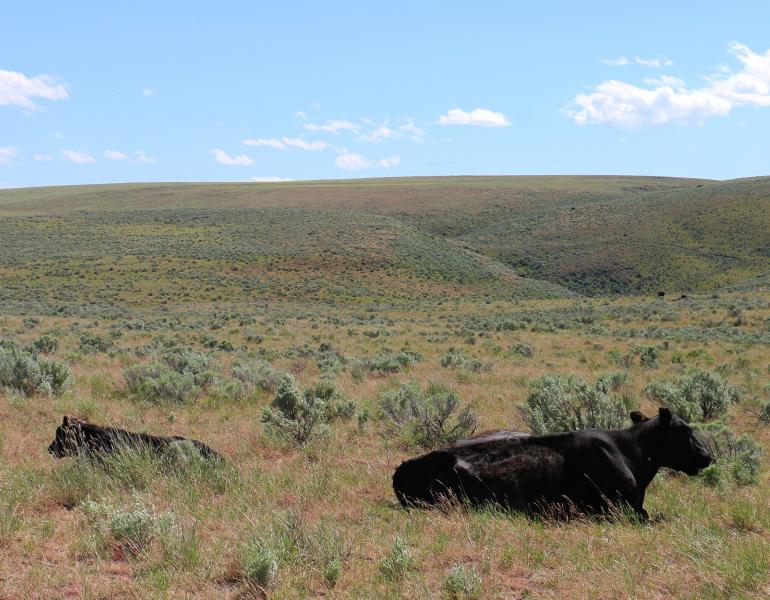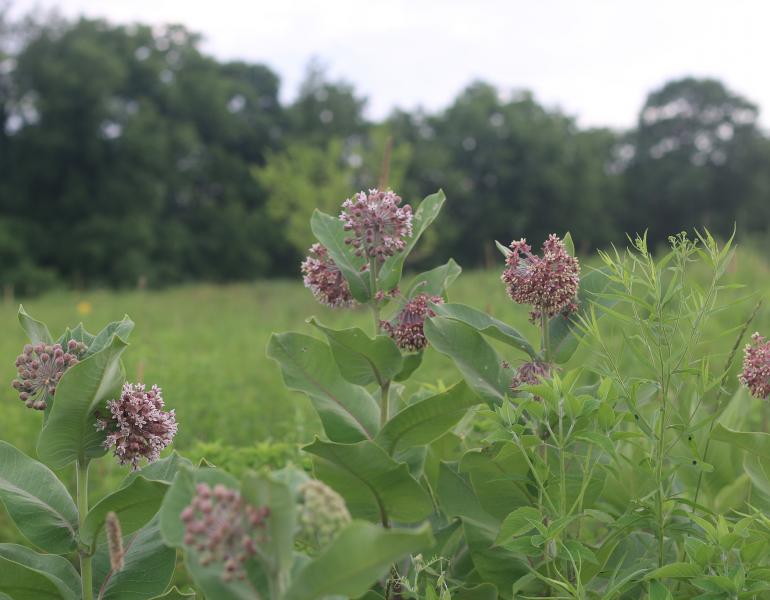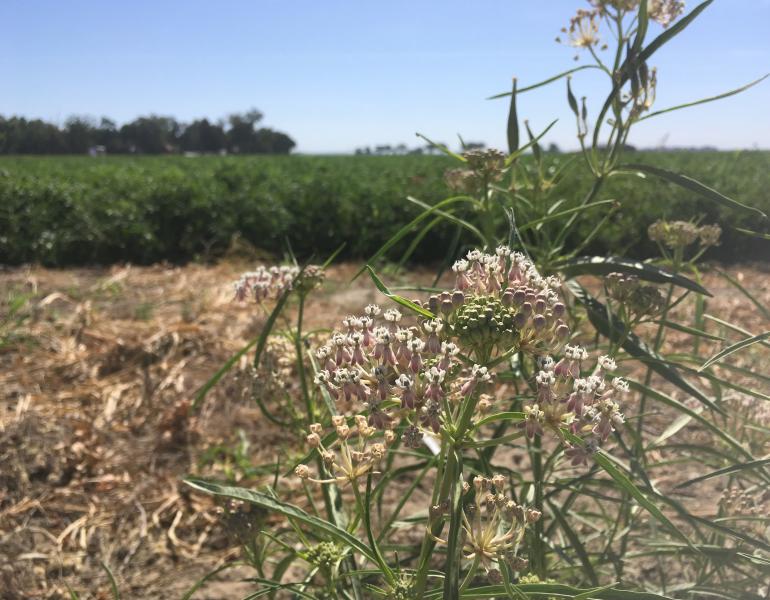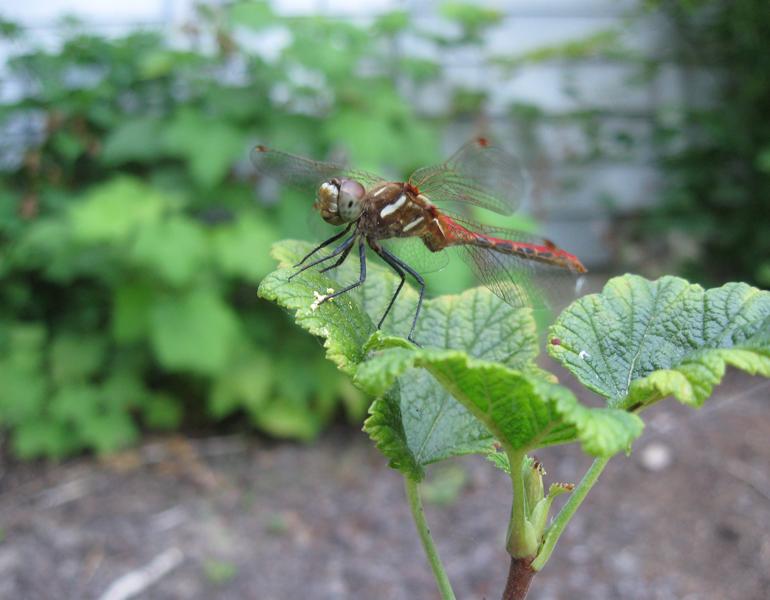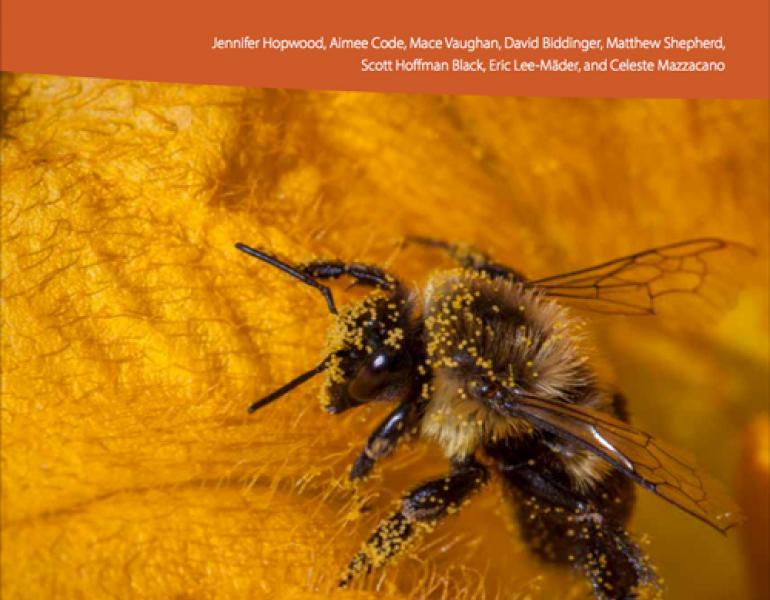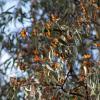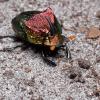The Environmental Protection Agency’s new rules represent progress toward reducing the risk of pesticides, but there are flaws in the plan that limit its effectiveness.
Insecticides
Court Tells Federal Agency to Rethink Widespread Pesticide Spray Program
Xerces won a lawsuit that will help to reshape the federal grasshopper management program into one that better supports everyone: ranchers, farmers, and wildlife.
Xerces Introduces New Searchable Systemic Insecticides Reference
The Xerces Society's new Searchable Systemic Insecticides List allows anyone to understand the dozens of insecticides currently registered in the U.S. that are designed to permeate plants from within. Systemic insecticides can render some or all of a plant toxic to insects that feed on plant tissue and are commonly used to suppress herbivorous sucking or chewing insects like aphids, caterpillars, and root nematodes. Unfortunately, systemic insecticides also harm beneficial insects.
Bee City USA Affiliate Spotlight: Decatur, GA
The Bee City USA and Bee Campus USA network includes more than 270 communities. The Decatur, GA, affiliate has made mosquito spraying by individual homeowners a central part of its advocacy efforts to protect pollinators.
Insecticide Seed Treatments Threaten Midwestern Waterways
Midwestern waterways are alive with beneficial invertebrates, but these essential species are threatened by a wide variety of contaminants. Xerces has just released a fact sheet that explores how the ubiquitous use of seed treatments affects water quality throughout the Midwest, and the findings are sobering for our aquatic ecosystems.
Protecting Grassland Ecosystems from Insecticides
Grasshoppers play a central role in rangeland ecosystems and food webs. Herbivory by grasshoppers speeds up the recycling of nutrients from plants, and they are a vital part of the diet of dozens of other rangeland animals. Aerial spraying campaigns to control grasshoppers have wide impacts on rangeland ecology. Xerces staff are working to reduce spraying and protect rangeland wildlife.
Planned Grasshopper Sprays Threaten Monarchs, Bees, Beneficial Insects, and Birds Across Western Rangelands
Rangelands of the western United States are home to many amazing species of wildlife from sage-grouse to butterflies, and frequently used for cattle grazing. A significant proportion of rangelands are publicly owned, so how they are managed, especially when it comes to grasshopper control, is a topic of great concern.
WARNING: this blog post may entice you to partake in “virtual democracy”
From the comfort of home, I engage in conservation efforts from Maine to California and from Tennessee to Washington. I can click “Join” knowing that no matter where that video link takes me, I’ll be met by dedicated people working to create a better world.
Ethanol Plant Causes Severe Pesticide Contamination in Nebraska
The majority of seed corn planted in the United States is coated with insecticides. Unsold seed corn is given to an ethanol plant for processing into biofuel—cheap disposal for the seed company and free raw material for the ethanol plant. But because this toxic material is not regulated as a pesticide, it has a significant impact on the environment and local communities.
Xerces Urges California to Step Up for Pollinators
California is poised to restrict the use of neonicotinoids—some of the most pollinator-toxic insecticides in use. Yet, a closer look at the narrow proposal, which focuses solely on managed pollinators, casts doubt on the value of the proposed regulations. In response, the Xerces Society is asking the state to take into account the significant risks these chemicals also pose to bumble bees, monarch butterflies, and other beneficial insects at risk of extinction.
Home on the Range: Grasshoppers and Insecticides on Western Rangelands
Usually considered competitors with livestock for forage, grasshoppers can actually be beneficial to rangelands by affecting plant composition, and even influence the soil microbial communities. They also play a critical role in the grassland food web. Despite the inability to tie grasshopper densities to the potential for damage, planes and ground crews are deployed every summer to spray against grasshoppers.
Science Notes: How Pesticide Sampling Can Help Restore Imperiled Western Monarchs
California’s Central Valley is critical breeding habitat for migrating western monarchs. In partnership with the University of Nevada, Reno, Xerces scientists tested milkweeds growing in the valley for pesticides. Sixty-four different pesticides were found across the samples, with an average of nine pesticides per sample.
To Protect Pollinators We Must Address All Risk Factors
Recent media coverage of a study on Tilia trees could lead to a dangerous misinterpretation of existing science—incorrectly exonerating neonicotinoid insecticides, which are known to harm pollinators.
Pesticide-Free Gardening Tips for Earth Week and Beyond
Please consider spending Earth Week in the garden, enjoying the diversity of insects, and taking a few of the actions outlined below to simultaneously minimize pest problems and avoid the use of pesticides.
Celebrating the Legacy of Rachel Carson
Reflecting upon the impactful work of a woman writer, scientist, and environmental advocate on the anniversary of the publication of Silent Spring.
Bumble Bee Die-Off Under Investigation in Virginia
Bee kill incidents have marred Pollinator Week—which should be a week of celebration. Will other states learn from Oregon to prevent future incidents and protect pollinators?
Scientists Urge Action to Protect Waters from Neonicotinoid Insecticides
Will California’s regulators take steps to curtail neonicotinoid water pollution? If they take the advice of scientists, they will.
How Our Gardening Choices Affect the Health of Our Waterways
Pesticide Program Director Aimee Code shares thoughts on her garden, information about pesticide impacts to our watershed, and news about upcoming Xerces projects in this article from Wings Magazine.
New Fact Sheet Highlights Risks to California’s Surface Water from Insecticides
Neonicotinoids have been found in California’s rivers and streams at levels known to harm or outright kill aquatic invertebrates.
New Report: How Neonicotinoids Can Kill Bees
To bring clarity to the debate and to inform discussion, the Xerces Society has published How Neonicotinoids Can Kill Bees. Summarizing hundreds of studies, the new report provides an in-depth look at the science behind the role these insecticides play in harming bees.
Shortfalls of EPA’s Preliminary Risk Assessment for Imidacloprid
While we are pleased that the EPA released this initial assessment, our review of the documents shows severe shortfalls in the methods and omissions in the evaluation.







